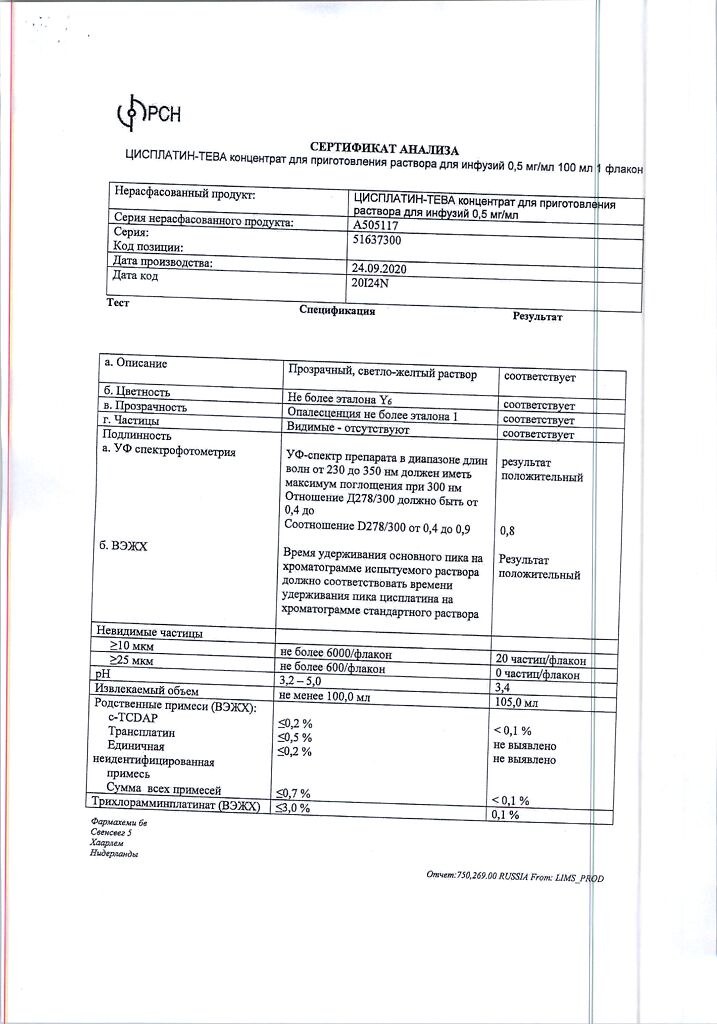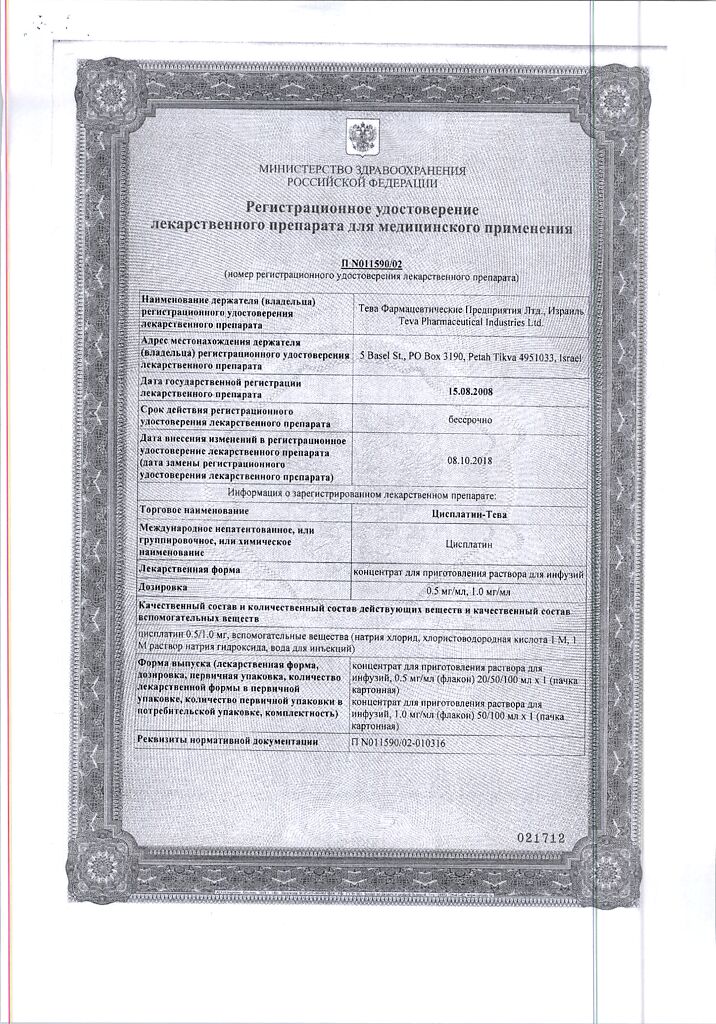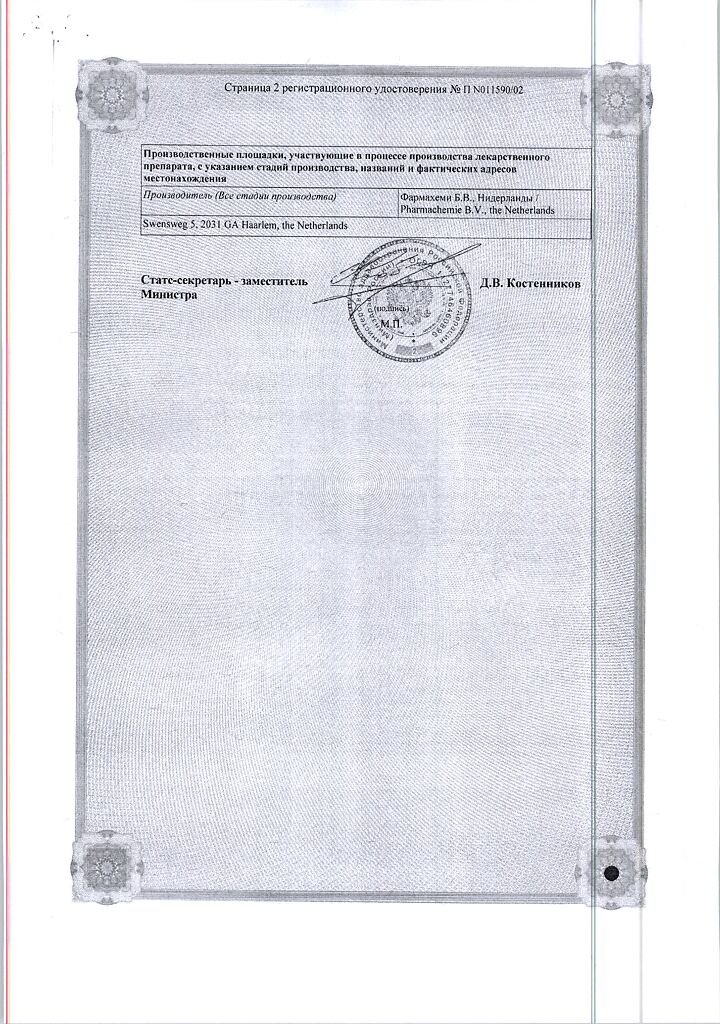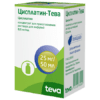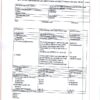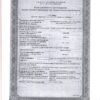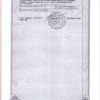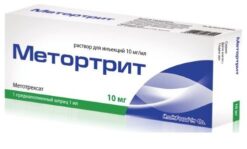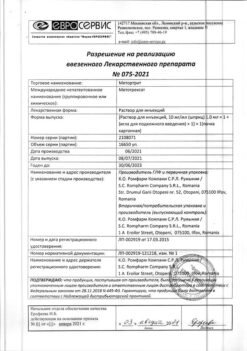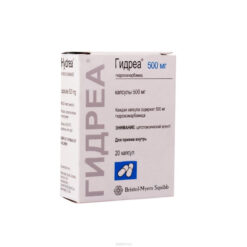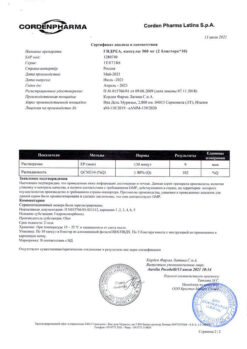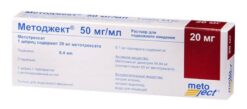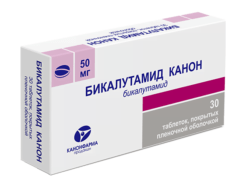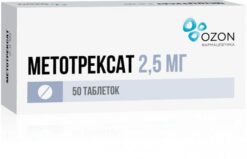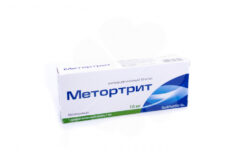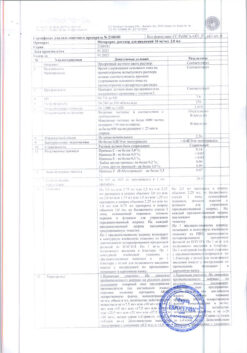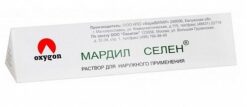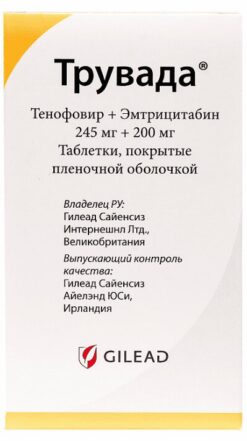No products in the cart.
Description
Pharmacodynamics
Cisplatin (cis-diamindichloroplatinum) is an anticancer drug containing the heavy metal platinum.
Cisplatin has properties similar to those of bifunctional alkylating agents, which create inter- and intra-traction cross-links in DNA, thereby disrupting its function, leading to cell death, but the drug has no cyclic and phase specificity. It has immunosuppressive and radiosensitizing properties.
Pharmacokinetics
After a rapid IV infusion (15 minutes to 1 hour), the appearance of cisplatin in plasma and its peak concentration is determined immediately after administration. When administered by IV infusion over 6-24 h, the plasma concentration of the drug increases gradually during the infusion, reaching a maximum by the end of the infusion.
Cisplatin is characterized by extensive distribution in body fluids and tissues, with the highest concentrations being achieved in the kidneys, liver and prostate. Platinum released from cisplatin binds rapidly to tissue and plasma proteins. Two hours after the end of a three-hour infusion, 90% of platinum in plasma is bound to proteins. Cisplatin has ability to accumulate in body and be found in some tissues for six months after the last dose of medicine. Biotransformation of cisplatin occurs by rapid non-enzymatic transformation to form inactive metabolites. Only non-protein-bound cisplatin or its platinum-containing metabolites have cytotoxic effects.
The half-life of total platinum has a very wide individual variability and varies within 2-72 h in healthy people, and 1-240 h in severe renal insufficiency. Cisplatin is excreted mainly with urine. Cisplatin can be excreted from the systemic bloodstream by dialysis, but only during the first 3 h after administration.
Indications
Indications
Cisplatin, usually as part of combination chemotherapy regimens, is widely used in the treatment of the following solid tumors:
germ cell tumors of women and men;
ovarian and testicular cancer;
lung cancer;
head and neck tumors.
In addition, cisplatin has antitumor activity in the following types of tumors:
cervical cancer;
bladder cancer;
osteosarcomas;
melanoma;
neuroblastoma;
esophageal cancer.
Pharmacological effect
Pharmacological effect
Pharmacodynamics
Cisplatin (cis-diamindichloroplatinum) is an anticancer drug containing the heavy metal platinum.
Cisplatin has properties similar to those of bifunctional alkylating agents that form interstrand and intrastrand cross-links in DNA, thereby disrupting its functions, which leads to cell death; Moreover, the drug does not have cyclic and phase specificity. It has immunosuppressive and radiosensitizing properties.
Pharmacokinetics
After a rapid intravenous infusion (15 minutes – 1 hour), the appearance of cisplatin in the blood plasma and the peak of its concentration are determined immediately after administration. With intravenous infusion over 6-24 hours, the concentration of the drug in plasma increases gradually during the infusion, reaching a maximum at the end of administration.
Cisplatin is characterized by extensive distribution in body fluids and tissues; the highest concentrations are achieved in the kidneys, liver and prostate gland. Platinum released from cisplatin quickly binds to tissue and plasma proteins. 2 hours after the end of the three-hour infusion, 90% of the platinum in the plasma is in a protein-bound state. Cisplatin has the ability to accumulate in the body and be found in some tissues for up to six months after the last dose of the drug. Biotransformation of cisplatin occurs through rapid non-enzymatic conversion with the formation of inactive metabolites. Only cisplatin, which is not bound to proteins, or its platinum-containing metabolites has a cytotoxic effect.
The half-life of total platinum has very wide individual variability and ranges from 2-72 hours in healthy people, and 1-240 hours in cases of severe renal failure. Cisplatin is excreted primarily in the urine. Cisplatin can be removed from the systemic circulation by dialysis, but only during the first 3 hours after administration of the drug.
Special instructions
Special instructions
The administration of Cisplatin should be carried out under the supervision of a physician experienced in the use of anticancer drugs.
Men and women of childbearing age should use reliable methods of contraception during treatment with Cisplatin.
Patients treated with Cisplatin should be periodically examined by a neurologist. If there are obvious symptoms of CNS toxicity, Cisplatin therapy should be discontinued.
Before starting therapy, audiometry should be performed, and in cases where symptoms of damage to the hearing organ appear or clinical hearing impairment is detected, repeated audiometry is indicated. For clinically significant hearing impairment, dosage adjustment or discontinuation of therapy may be required.
During treatment with Cisplatin, periodic blood tests are required, determining the content of leukocytes, platelets, hemoglobin, blood cells, renal and liver function tests, as well as the level of electrolytes in the blood serum.
When using Cisplatin, all usual instructions for the use of cytotoxic drugs must be followed. If the drug gets into your eyes, rinse them immediately with plenty of water or 0.9% sodium chloride solution. If the drug comes into contact with the skin, immediately wash the area of contact with the drug with plenty of water. If the drug is inhaled or gets into your mouth, consult a doctor immediately.
Active ingredient
Active ingredient
Cisplatin
Composition
Composition
1 ml contains:
Active ingredients:
cisplatin 0.5 mg.
Excipients:
sodium chloride,
hydrochloric acid or sodium hydroxide (to adjust pH levels),
water d/i.
There is 100 ml of solution in a dark glass bottle.
There is 1 bottle in a cardboard package.
Contraindications
Contraindications
Individual intolerance to cisplatin or other compounds containing platinum;
impaired renal function (serum creatinine level more than 115 µmol/liter);
inhibition of bone marrow hematopoiesis;
heart failure;
pregnancy and lactation;
generalized infections.
Side Effects
Side Effects
From the urinary system: nephrotoxicity (is cumulative in nature and is the main toxic factor limiting the dose of Cisplatin). Renal damage, which is accompanied by damage to the renal tubules, may first be detected in the second week after dosing and may be manifested by increased serum creatinine, urea, uric acid levels and/or decreased creatinine clearance. Renal failure is usually mild or moderate and is reversible with normal doses of Cisplatin.
From the digestive system: nausea and vomiting, which usually begin within the first hour of therapy and continue for 24 hours or more, occur in 65% of patients. These side effects are only partially eliminated by standard antiemetic medications. The severity of these symptoms can be reduced by dividing the total dose calculated for the treatment cycle into smaller doses administered once daily for five days.
Other commonly observed adverse events from the gastrointestinal tract include abdominal pain, diarrhea and constipation. Occasionally, minor and transient increases in serum AST and ALT levels may be observed.
From the hematopoietic system: often – myelosuppression (in most cases it is expressed slightly or moderately and is reversible with the use of normal doses). The lowest levels of white blood cells and platelets are usually detected after about 2 weeks; their initial level is restored within 4 weeks in most patients. Anemia may also occur.
From the hearing system: unilateral or bilateral tinnitus, with or without hearing loss, occurs in approximately 10% of patients; this side effect is usually reversible. It has been established that damage to the hearing organ is dose-dependent and cumulative in nature, and this side effect is more often observed in very young or old patients. There are reports of toxic effects of the drug on the vestibular apparatus.
From the central nervous system and peripheral nervous system: peripheral neuropathies occur infrequently. They are usually sensory in nature (eg, paresthesias of the upper and lower extremities), but motor disturbances (decreased reflexes and weakness in the lower extremities) may also occur. Autonomic neuropathy, seizures, slurred speech, loss of taste, and memory loss may also occur. The development of Lhermitte syndrome (spinal myelopathy and autonomic neuropathy) has been reported in the literature. Treatment should be stopped at the first appearance of these symptoms.
From the immune system: allergic reactions are sometimes observed, manifested in the form of redness and swelling of the face, wheezing in the lungs, tachycardia and decreased blood pressure. These reactions may occur within minutes of starting cisplatin administration. In rare cases, urticaria and maculopapular skin rash may occur.
From the visual system: in rare cases, optic neuritis, papilledema, and cortical blindness are observed. There may also be changes in the perception of colors, especially in the yellow-blue part of the spectrum. The only change in the fundus may be irregular retinal pigmentation in the macula area.
These side effects are usually reversible and disappear after discontinuation of the drug.
Electrolyte disturbances: hypomagnesemia, hypocalcemia and hypokalemia. Hypomagnesemia and/or hypocalcemia may present clinically with muscle hypersensitivity or cramps, tremor, carpopedal spasm (cramps in the hands and feet) and/or tetany. Possible hyponatremia due to the syndrome of inadequate production of antidiuretic hormone.
Local reactions: if the drug gets under the skin, phlebitis, cellulite and skin necrosis may develop.
Other: cardiovascular disorders (coronary heart disease, congestive heart failure, arrhythmias, orthostatic hypotension, thrombotic microangiopathy, etc.), hyperuricemia, minor alopecia, myalgia, fever and platinum gum line. There have been cases of impaired spermatogenesis and azoospermia.
Interaction
Interaction
Concomitant or sequential use of cisplatin with aminoglycoside antibiotics (gentamicin, kanamycin, streptomycin) or with other potentially nephrotoxic drugs (for example, amphotericin B) may potentiate its nephrotoxic and ototoxic effects.
Loop diuretics (furosemide, clopamide, ethacrynic acid) can enhance the ototoxicity of cisplatin.
It is known that cisplatin may interfere with the renal excretion of bleomycin and methotrexate (possibly due to cisplatin-induced nephrotoxicity) and increase the toxicity of these drugs.
In patients receiving cisplatin and anticonvulsants, serum concentrations of the latter may decrease to subtherapeutic levels.
Cisplatin may cause an increase in uric acid levels in the blood. Therefore, in patients taking concomitant medications to treat gout, such as allopurinol, colchicine, probenecid, or sulfinpyrazone, dosage adjustments of these medications may be necessary to control hyperuricemia and gout attacks.
Overdose
Overdose
The main expected complications of overdose are impaired renal function, liver dysfunction, visual impairment (including retinal detachment) and hearing impairment (deafness), severe myelosuppression, uncontrollable vomiting and/or severe neuritis. Overdose can result in death.
There is no known antidote to cisplatin. Treatment is symptomatic. A partial effect can be achieved with hemodialysis performed within the first three hours after an overdose.
Storage conditions
Storage conditions
Store at a temperature not exceeding 25°C, protected from light and out of the reach of children.
Shelf life
Shelf life
2 years.
Manufacturer
Manufacturer
Farmahemi B.V., Netherlands
Additional information
| Shelf life | 2 years. |
|---|---|
| Conditions of storage | Store at a temperature not exceeding 25°C in a place protected from light and out of the reach of children. |
| Manufacturer | Pharmahemi B.V., The Netherlands |
| Medication form | concentrate for preparation of infusion solution |
| Brand | Pharmahemi B.V. |
Related products
Buy Cisplatin-Teva, 0.5 mg/ml 100 ml with delivery to USA, UK, Europe and over 120 other countries.


